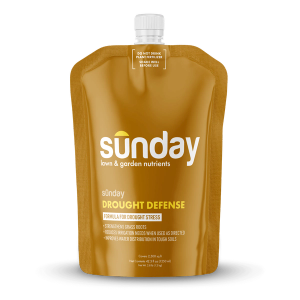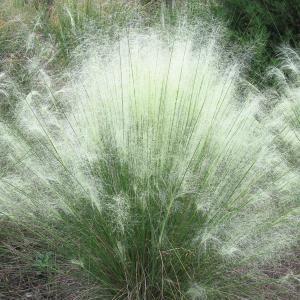Why consider replacing your lawn
With ongoing drought leading to new and continuing water restrictions, you might wonder how to use less water in your yard. Replacing the lawn (or parts of the lawn) with drought-tolerant alternatives is one way to reduce water use in the landscape – and protect our precious water supplies.
Before you replace your lawn
- Confirm if alternative landscaping is allowed by your HOA or municipality and what restrictions might be in place.
- Look into rebate programs to help ease the cost of turf replacement or irrigation conversion—or better yet, get tax breaks for doing so!
Drought tolerant lawn alternatives
There’s a huge variety of drought-tolerant lawn alternatives out there, including:
- ornamental grasses
- wildflowers
- shrubs
- low-growing groundcovers
How to select lawn alternatives
Ultimately, what you grow will be based on your personal preferences. Whatever you choose, though, it's important to select drought-tolerant plants adapted to your local weather and climate conditions. Bonus points if they use less water and pesticides than the turf you’re replacing.
Drought tolerance isn’t the only plant characteristic for selecting plants. You also want to think about the following:
- Number of plants needed
- Sun requirements and availability
- Bloom color
- Bloom season and timing
- Texture
- Spacing
- Garden maintenance
- Cold tolerance and hardiness zones
Incorporating non-living materials such as boulders, gravel or mulch, or even sculptures into your new alternative landscape can also help add visual interest, reduce garden maintenance, and reduce water needs.
How to replace lawn with drought tolerant plants
Make sure to time your replacement right. Spring and fall are generally the best times to plant new plants–the cooler temperatures and rainfall help new plants ease into establishment. Summer, with high temperatures and potential for drought, is usually better for planning rather than planting.
Once you time your switch, follow these steps:
Prep the soil
Remove any weeds, lingering grass bits, and debris. Mix in any soil amendments or organic matter now to help hold moisture in the soil.
Pro Tip: A soil test is always a good idea when starting a new garden project, and can help you decide if you need to amend the soil before planting!
Adjust irrigation
If you still plan to use irrigation, now’s the time to make sure it’s in tip-top shape – after all, the goal of many turfgrass conversions is to reduce water use! Audit and rezone your irrigation system as necessary, make sure you aren’t watering the sidewalk or other hardscapes, and consider alternative irrigation sources for your new landscape. Rain barrels, if allowed, are a great option to repurpose rainfall, drip irrigation systems can deliver water precisely where it’s needed, and products like tree gators or tree diapers can help water your plants in a controlled manner.
Plant your drought-tolerant plants
Now, the fun part. Get your new plants in the ground. Again, make sure to think about your garden layout and space your plants carefully. Plant according to mature size, and place plants with similar water use together to accommodate for irrigation zoning.
Water to establish
Not something you thought we’d say, right? But your drought-tolerant plants are only drought-tolerant after they get a chance to establish in the landscape. Water deeply and infrequently when rainfall is lacking, at least throughout the first growing season, so your plants can get their roots established.
How to maintain your drought alternative landscape
After your plants get established, they should be able to handle longer periods of drought. Keep an eye on them and water if necessary during prolonged, severe drought or heat. You can also add mulch to tidy up the landscape, prevent weeds, and help keep moisture where it's needed - in the root zone.
And remember, you don’t have to go all-or-nothing with turf removal. Keeping pockets of turf that serve a purpose, like recreation spaces, pet areas, or traffic lanes is okay. If you have areas of turf that require a lot of maintenance or inputs to keep happy or areas that are rarely seen or used (think side yards, fence lines, etc.), those might be good places to start your alternative landscaping journey. You can always expand later.
Cited sources
Lawn Alternatives. University of Maryland Extension.
Principles of Water Wise Landscaping. Utah State University Extension.



















